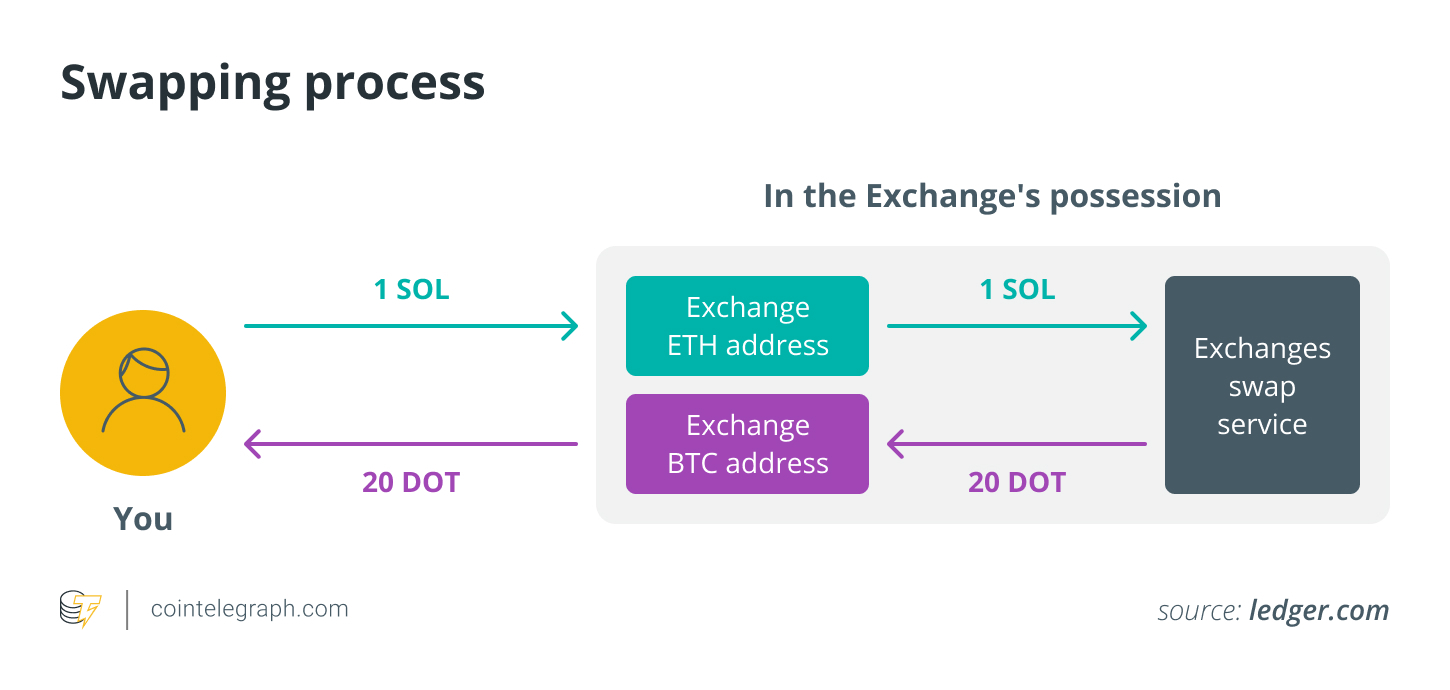
The Rise of the Crypto Swap: A 2025 Overview
As we advance through 2025, the landscape of cryptocurrency trading is undergoing a dramatic transformation. Decentralized exchanges (DEXs) are surging in popularity, with spot trading volumes dwarfing those of centralized exchanges (CEXs). This shift signals a clear preference for direct crypto swaps, sidestepping the traditional complexities of selling into fiat and repurchasing.
A crypto swap facilitates a wallet-to-wallet exchange of digital assets, cutting out intermediaries and order books. Instead of converting Bitcoin (BTC) to dollars to then buy Ether (ETH), you can swap them directly. This direct approach, especially when combined with cross-chain swap solutions, is rapidly becoming the preferred method for many crypto users.
Swapping vs. Traditional Trading: The Benefits
Decentralized swaps offer several advantages over conventional exchange methods:
- Lower Fees: Swaps often feature lower trading fees and markups compared to traditional platforms.
- Improved Liquidity: Swaps tap into liquidity pools, reducing slippage and providing smoother transactions.
- Non-Custodial Control: Users maintain control over their private keys, eliminating the need to trust centralized entities.
- Faster Transactions: Swaps are typically instant, bypassing multi-step conversions and settlement delays.

Understanding the Risks
While swapping offers numerous benefits, it’s crucial to acknowledge the potential risks. These include smart contract vulnerabilities and slippage on large trades. The best cross-chain bridges and swap platforms prioritize security audits, deep liquidity, and protective measures like front-running prevention.

How Swaps are Changing in 2025
The best cross-chain swap platforms now aggregate liquidity across different chains, bridges, and rollups, delivering improved rates and reduced risks. For example, Symbiosis.finance allows users to execute cross-chain swaps without ever needing to interact with a separate bridge interface. One of the notable upgrades is that Symbiosis built its own blockchain to manage and swap bridge logic internally, providing predictable fees and faster execution.
This approach removes several points of failure while enhancing the user experience. In essence, modern cross-chain bridges aim to simplify swaps with a single click, all while managing complex interoperability and security challenges behind the scenes.

Beyond Traditional Swaps: Innovation in the Space
The cryptocurrency market is teeming with innovation. Platforms like Uniswap v4 and 4-Swap represent distinct approaches to the same objective: providing users with the tools to move assets between blockchains quickly, securely, and cost-effectively.
Uniswap v4: Single-Chain Efficiency
Uniswap v4 emphasizes in-chain swaps, focusing on delivering deep liquidity and ultra-low gas fees within Ethereum and supported layer 2s. Through features like the hooks framework, developers can insert custom logic at different points in a swap’s lifecycle, from adjusting fees to adding new order types.
4-Swap: Peer-to-Peer Atomic Swaps
In contrast, 4-Swap utilizes hashed time-locked contracts (HTLCs) for direct onchain swaps between two parties, eliminating the need for pooled liquidity. This approach emphasizes trustlessness and privacy, though it relies on finding a matching counterparty.
Conclusion
The evolution of crypto swaps in 2025 highlights a trend towards greater efficiency, lower costs, and user empowerment. As technology advances, the landscape continues to transform, offering a variety of options to meet the diverse needs of the crypto community. Users should always conduct thorough research and be aware of the inherent risks associated with this ever-evolving ecosystem. Remember, this article does not contain investment advice.


